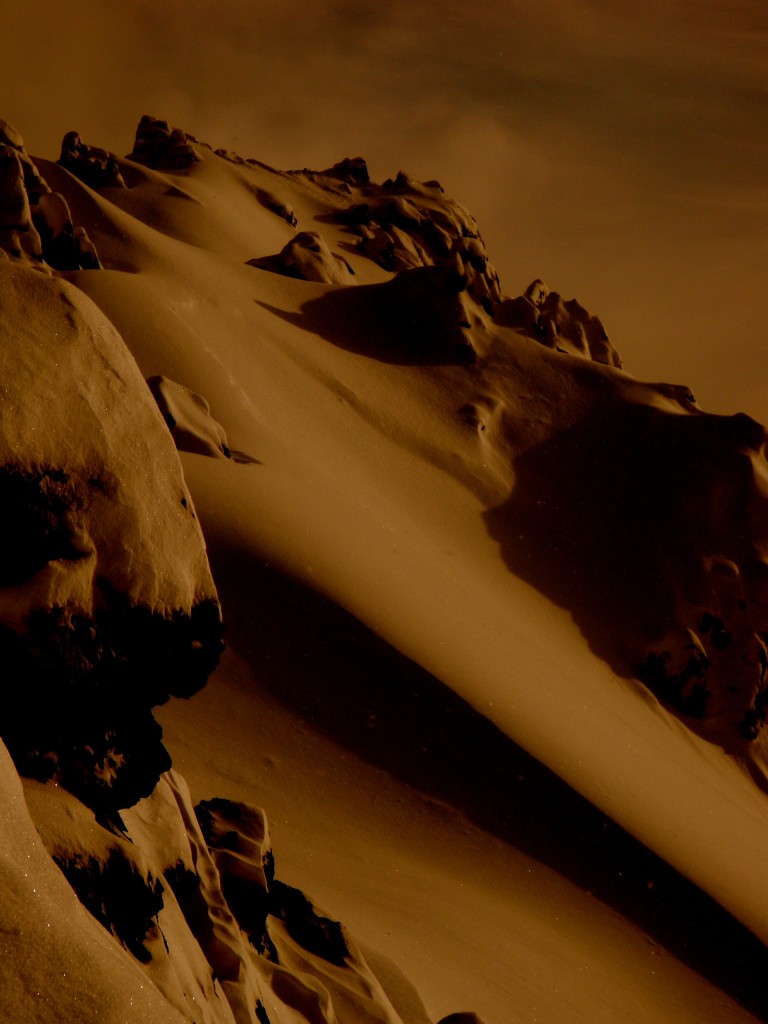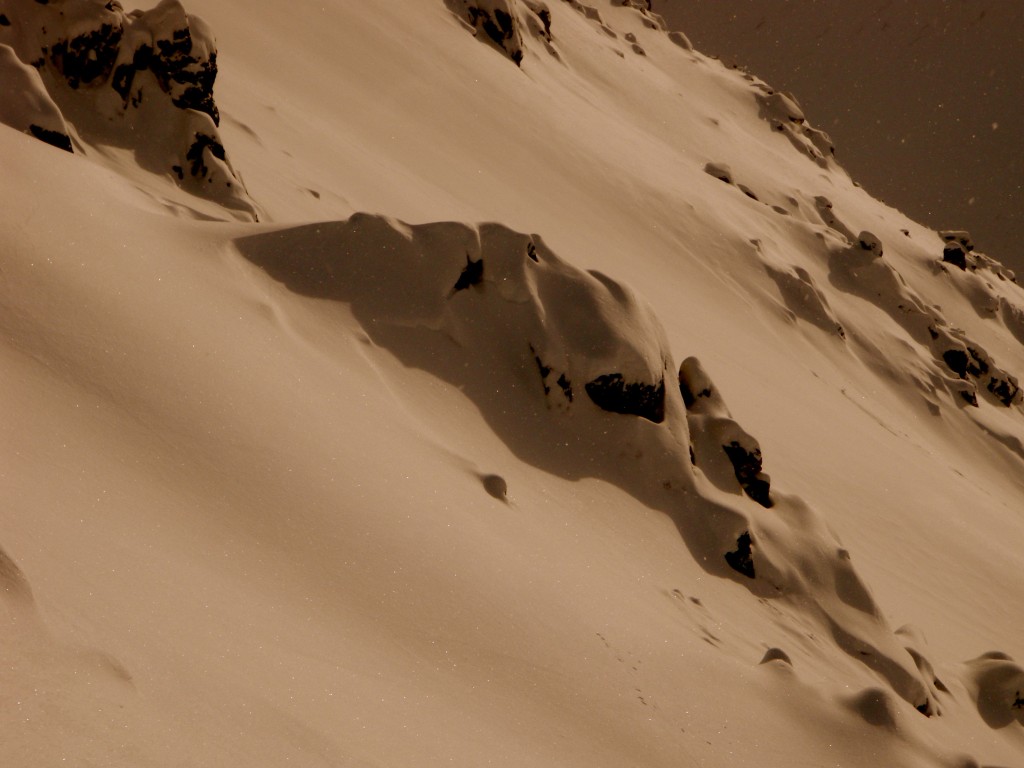Front Range – Canyon Road – Peak 3 & 4
Signs of instability:
- A couple very small D1 (see avalanche size scale here) human triggered soft slab avalanches on steep, loaded rollovers leeward (Rabbit Creek) side Peak 3-4 ridge
- Numerous D1 storm snow avalanches that likely occurred naturally during the latter half of 2/18-19 storm leeward (Rabbit Creek) side Peak 3-4.5 ridge
- Small, short running, and isolated shooting cracks in obviously deeper areas of snow on leeward (Rabbit Creek) side of the Peak 3-4 ridge
Weather:
- Dense clouds topped out at ~2000′ between 1100-1430. Passing thin clouds and some flurries, but otherwise sunny above.
- Light SE wind with some gusts providing for a bit of snow transport at times.
- Temps in the low teens.
Surface conditions:
- ~10″ low density snow at the Canyon Road parking area before lower gate, and up to ~2′ in the upper elevations (above ~3800′)
- DEEP and blower – best powder day so far this season
Discussion:
Here are the preliminary storm snow totals as of 9am this morning, provided by the Anchorage NWS office: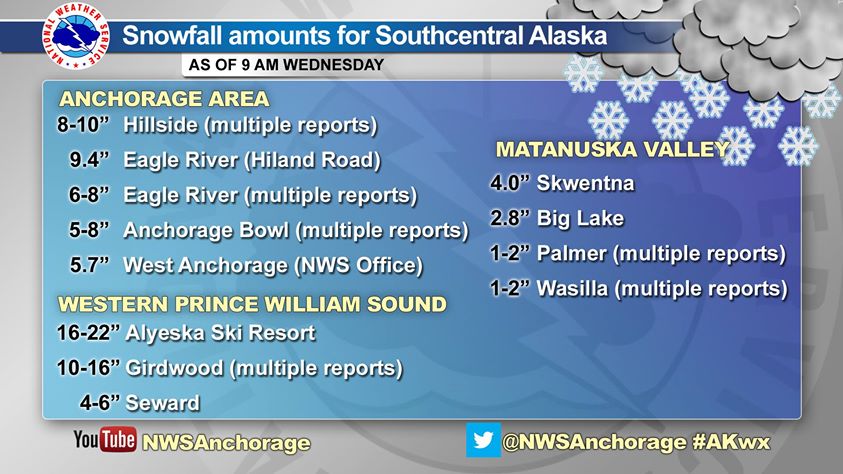
Numerous naturals, in areas more heavily loaded since the trickle began last Thursday, ran in the upper elevations on the Rabbit Creek side of the Peak 3-4.5 ridge likely sometime during the latter half of the Tuesday-Wednesday storm.
The largest natural, which occurred at the top of Peak 4, swept out to snow Monday’s surface snow as evidenced by Monday’s tracks being faintly visible on the somewhat re-filled bed surface (the most distinct track on the right is from Wednesday):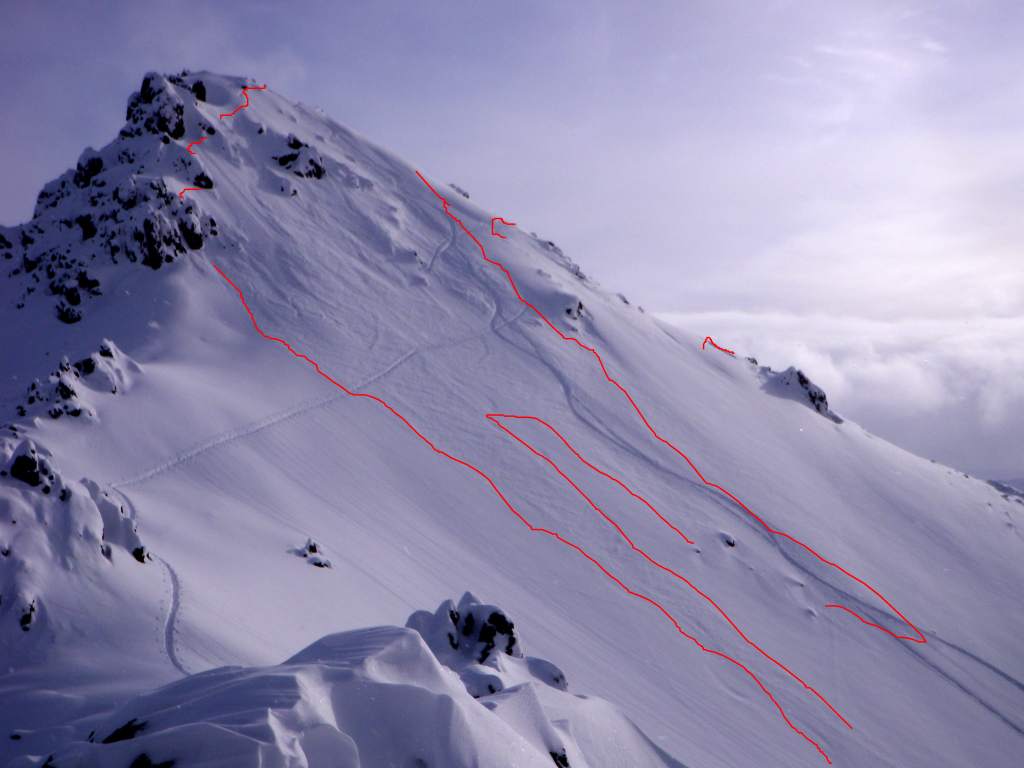
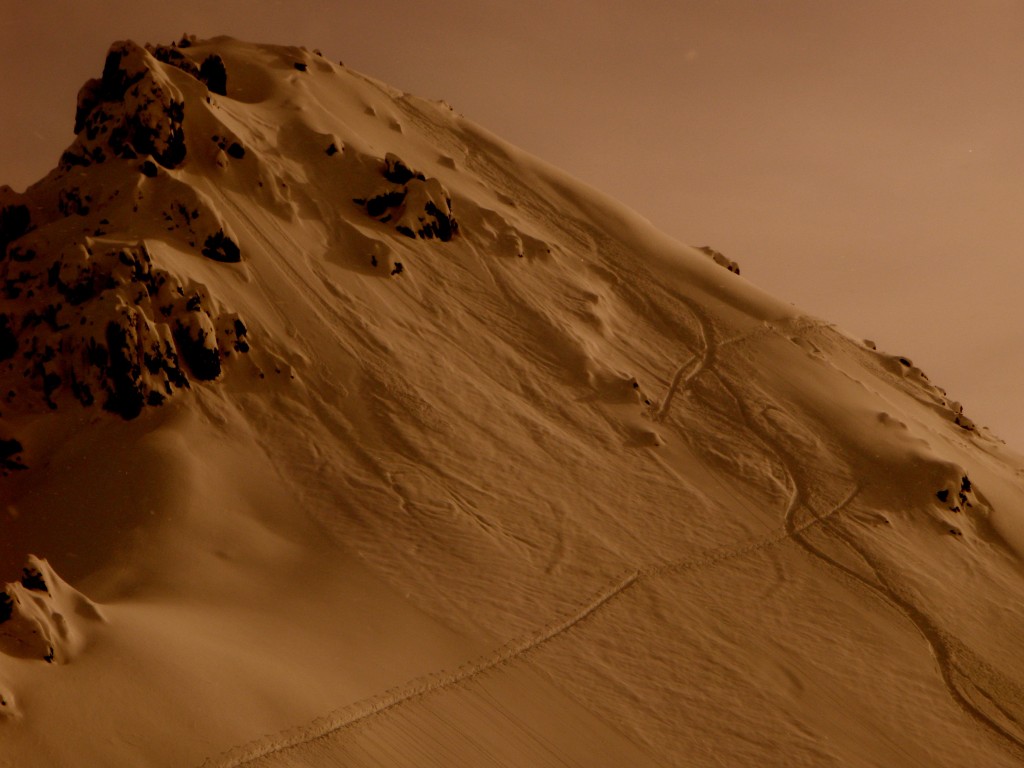
Skier’s right crown on skyline (filled back in quite a bit):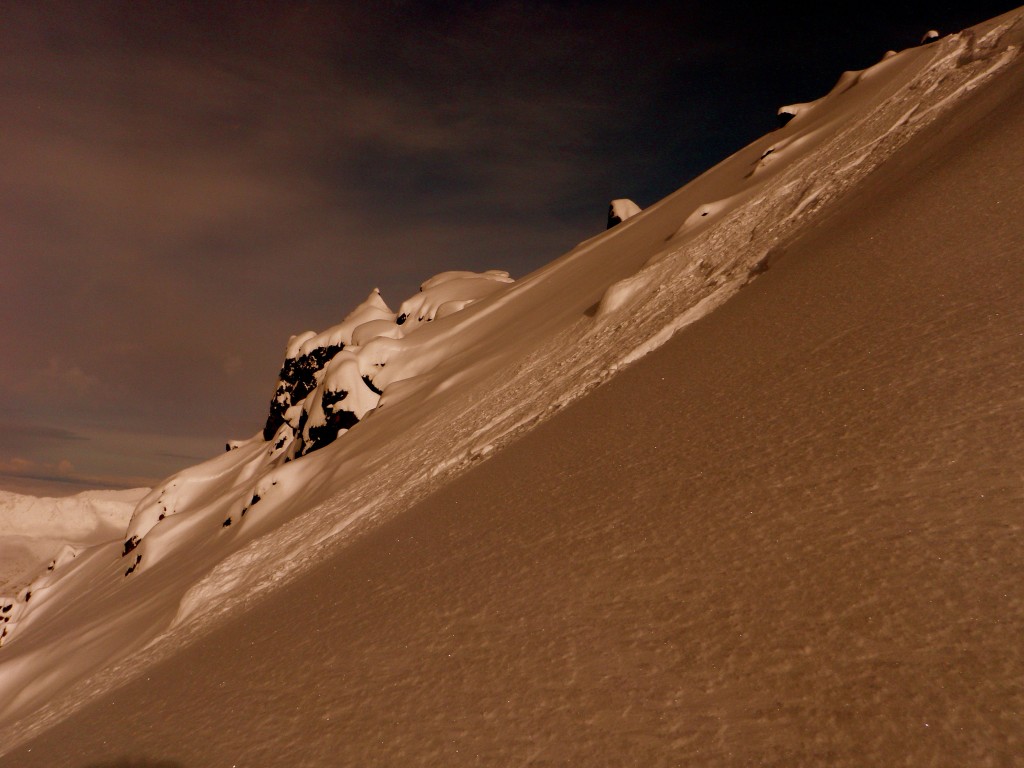
Crown of one of the smaller, separate naturals on Peak 4 skier’s left shoulder near top: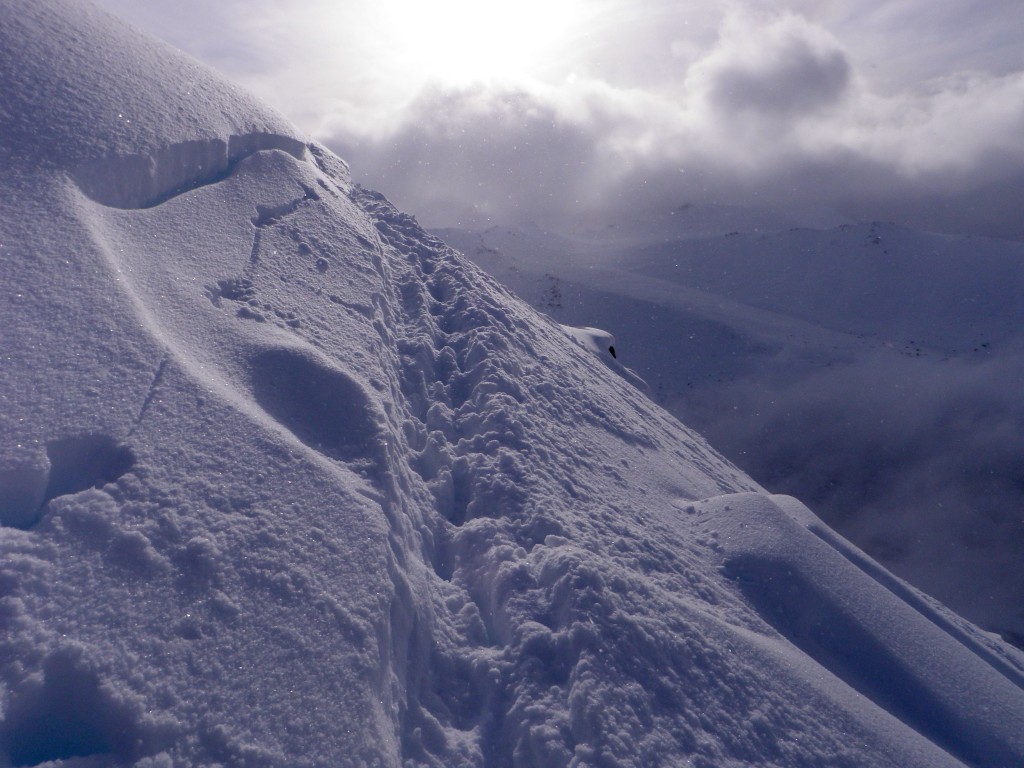
Two views of a natural along the ridge between Peak 3 & 4: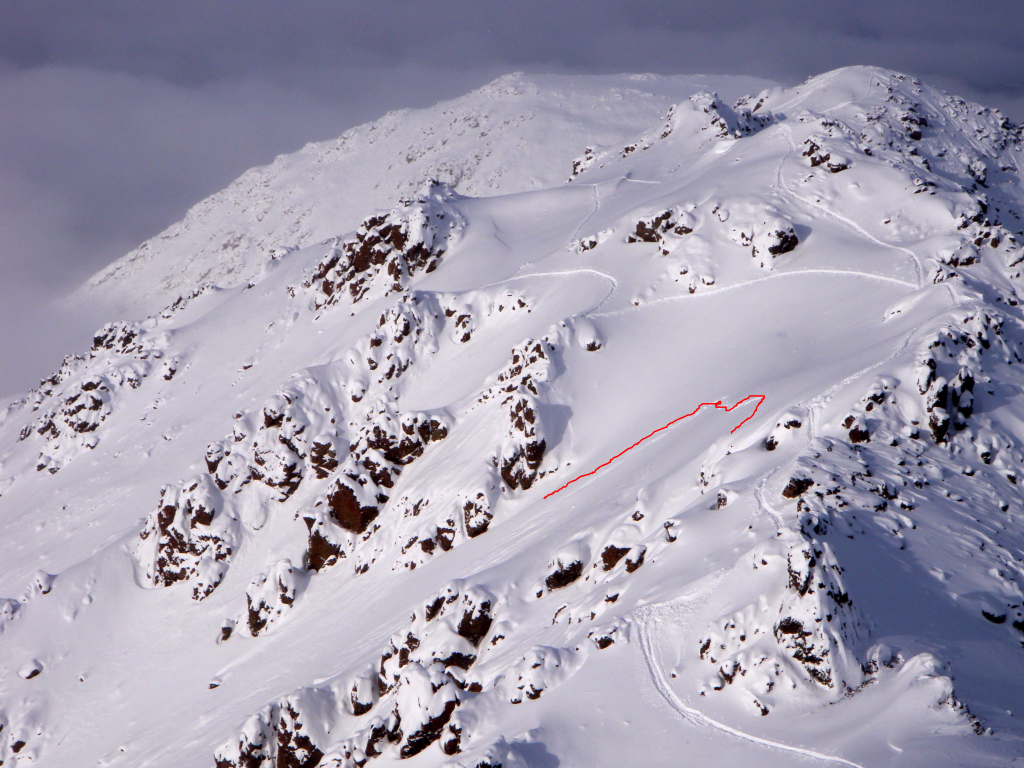
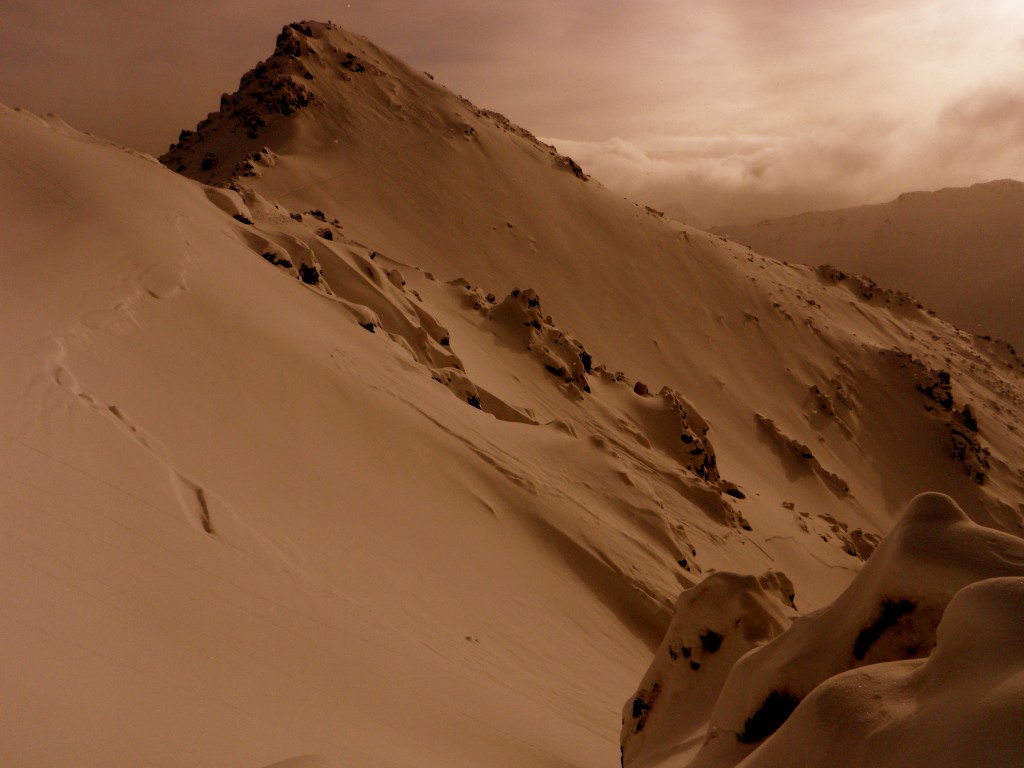
Small naturals along the ridge between Peak 4 & 4.5: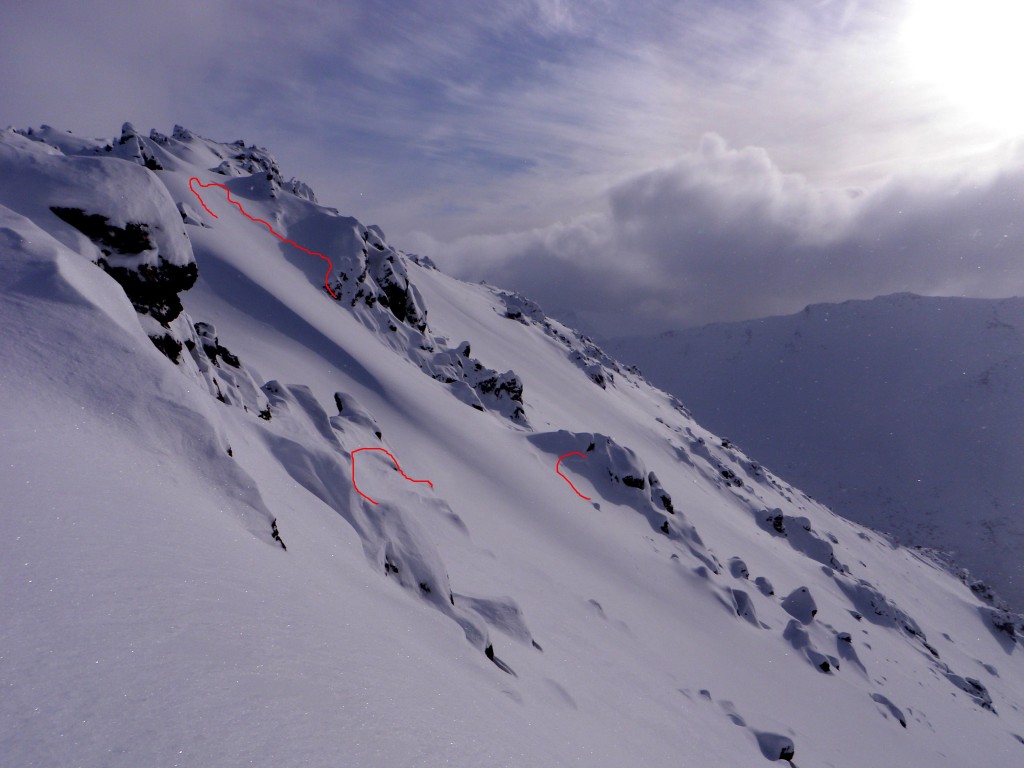
Observed danger Wednesday, February 19, 2014:

Click here to view complete danger scale
Expected danger Thursday, February 20, 2014:
Click here to view complete danger scale
Main concern is human-triggered soft slab avalanches in upper elevations terrain on steep slopes, especially at rollovers and in more heavily loaded areas.

